Science News
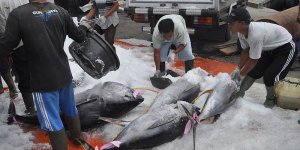
Many Pacific Island countries and territories will lose 50-80 per cent of marine species by the end of the 21st century if climate change and global warming continue unchecked, reports a new study. »
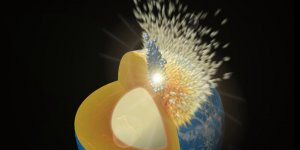
Planetary collisions are at the core of our solar system’s formation. Scientists have long believed that after the Moon’s formation, the early Earth experienced a long period of bombardment that diminished about 3.8 billion years ago. »
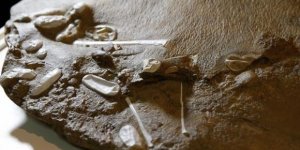
Brazil's National Museum, in Rio de Janeiro, unveiled the details surrounding the discovery of hundreds of remains of pterosaur bones and 300 eggs—some of them with preserved embryos—in China. Involved in the finding were Brazilian and Chinese scientists. »

A NASA-led team has found evidence that the oversized planet WASP-18b is wrapped in a smothering stratosphere loaded with carbon monoxide and devoid of water. The findings come from a new analysis of observations made by the Hubble and Spitzer space telescopes. »

A study reported on formation of a new bird species on the Ecuadorean Galápagos Islands. »

In intelligent persons, certain brain regions are more strongly involved in the flow of information between brain regions, while other brain regions are less engaged. »

An interdisciplinary team of researchers using the IceCube Neutrino Observatory in Antarctica has measured how certain high-energy neutrinos are absorbed by the Earth, as opposed to passing through matter as most neutrinos do. The finding could help expand scientists' understanding of the fundamental forces of the universe. »

Dark matter and dark energy may not actually exist, according to a study which suggests that accelerating expansion of the universe and the movement of the stars in the galaxies can be explained without these concepts. »
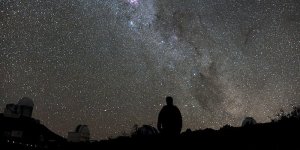
The Earth’s night skies are getting brighter. A study published Wednesday in the journal Science Advances, finds the Earth’s artificially lit outdoor areas grew by 2.2 percent per year from 2012 to 2016. »
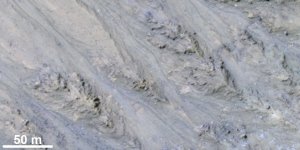
Dark features on Mars previously considered evidence for subsurface flowing of water are interpreted by new research as granular flows, where grains of sand and dust slip downhill to make dark streaks, rather than the ground being darkened by seeping water. »

In the fight against brain damage caused by stroke, researchers have turned to an unlikely source of inspiration: hibernating ground squirrels. »

Premature infants are at risk for a broad spectrum of life-long cognitive and learning disabilities. Historically, these conditions were believed to be the result of lack of blood flow to the brain. Now a new study finds that major disturbances are actually caused by low oxygen. »
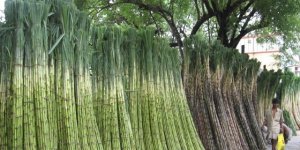
A Brazilian scientist who developed a method that reduces greenhouse gas emissions from sugarcane cultivation has been awarded a prize that each year recognises a researcher whose work has excelled in the area of fertiliser use. »

Exposure to common air pollutants, such as ozone and fine particles, may increase the risk of early pregnancy loss. »
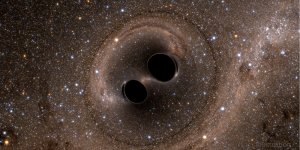
There are merging objects whose gravitational wave signals have not yet been detected: supermassive black holes, more than 100 million times more massive than our Sun. Most large galaxies have a central supermassive black hole. »

Scientists report that the Amazon region has more than 6,700 species of native trees, a figure substantially lower than the 16,200 species estimated in previous reports. »

A temperate Earth-sized planet has been discovered only 11 light-years from the Solar System by a team using ESO’s unique planet-hunting HARPS instrument. The new world has the designation Ross 128 b and is now the second-closest temperate planet to be detected after Proxima b. »

Surface features on Ceres -- the largest world between Mars and Jupiter -- and its interior evolution have a closer relationship than one might think. »

A home-made filter system using layers of soil and gravel cleans domestic waste water well enough to make it suitable for irrigation, a research team in Morocco has found. »

Researchers have used high-powered microscopy and rheometry -- the measurement of how materials become deformed in response to applied force -- to view the blood clotting process in real time and at the cellular level. »

Why are drylands changing in the Chobe district of Northern Botswana? A new study tracks differences in the savanna there across 30 years, and provides information that will allow governments and non-profit organizations to improve dryland management strategies in the region. »

A new NASA study adds evidence that a geothermal heat source called a mantle plume lies deep below Antarctica's Marie Byrd Land, explaining some of the melting that creates lakes and rivers under the ice sheet. »

The scientists used radio or GPS transmitters to track alligators adn discovered that the amount of time alligators spend in fresh or salt water depends on factors such as tide range and water temperature. »

Using an innovative “NeuroGrid” technology, scientists showed that sleep boosts communication between two brain regions whose connection is critical for the formation of memories. »

Black holes are famous for being ravenous eaters, but they do not eat everything that falls toward them. A small portion of material gets shot back out in powerful jets of hot gas, called plasma, that can wreak havoc on their surroundings. »

A new study sheds light on the normal function of LRRK2, the most common genetic cause for late-onset Parkinson’s disease. »

A small, recently discovered asteroid -- or perhaps a comet -- appears to have originated from outside the solar system, coming from somewhere else in our galaxy. If so, it would be the first "interstellar object" to be observed and confirmed by astronomers. »

The Dawn team found that Ceres' crust is a mixture of ice, salts and hydrated materials that were subjected to past and possibly recent geologic activity, and that this crust represents most of that ancient ocean. »

Extensive, mature forest cover can mitigate the impact of severe heat waves, droughts and other weather extremes over large regions, according to new NOAA research. »

A new study from the Georgia Institute of Technology suggests that daydreaming during meetings isn't necessarily a bad thing. It might be a sign that you're really smart and creative. »

New New King's College London research reveals how blood inflammation affects the birth and death of brain cells, which could offer new treatment targets for antidepressants. »

On Monday, digital security researchers Mathy Vanhoef and Frank Piessens of Belgium's KU Leuven university publicly disclosed a security vulnerability in the WPA2 Wi-Fi protocol, which they called KRACK. »

Organic compounds and particular matter released when burning forests to clear land for agriculture can kill human lung cells or lead to irreversible damage to DNA, according to a new study. »

A parasite that causes malaria in monkeys infected 50 people between 2015 and 2016 in Rio de Janeiro, in the Mata Atlântica region. »

Cutting meat consumption is one of three strategies that an international team of scientists recommends to tackle the rising problem of antibiotic resistance stemming from abundant use in animal farming. »

In the first study of its kind, an international team of genomics researchers has identified new regions of the human genome that are associated with skin color variation in some African populations, opening new avenues for research on skin diseases and cancer in all populations. »

Scientists have found a way to resolve the conflict that has sprung up between protecting forests from increasingly frequent wildfires and droughts and preserving sufficient habitat for the endangered spotted owl, Strix occidentalis. »

U.S. researchers said this week they have discovered a way to genetically engineer corn, the world's largest commodity crop, to produce a type of amino acid found in meat. »

Paleontologists working in Tanzania have identified a new species of hyaenodont, a type of extinct meat-eating mammal. »

On Oct. 12 EDT a small asteroid designated 2012 TC4 will safely pass by Earth at a distance of approximately 26,000 miles (42,000 kilometers). This is a little over one tenth the distance to the Moon and just above the orbital altitude of communications satellites. »

Joining a high-yield pepper plant sapling to the roots of a strong and resistant variety could help pepper farmers cope with lower rainfall, a study has found. »

Policies that prevent fires caused by people in El Cerrado (the Brazilian savannah) lead to biodiversity losses because they promote the expansion of forests with dense vegetation. »

Using blood samples from an individual previously infected with Zika virus, scientists have developed an antibody-based Zika virus therapeutic that protected monkeys from infection. »

It might be lingering bashfully on the icy outer edges of our solar system, hiding in the dark, but subtly pulling strings behind the scenes: stretching out the orbits of distant bodies, perhaps even tilting the entire solar system to one side. »

One of the most mysterious stellar objects, called KIC 8462852, also known as Boyajian's Star, or Tabby's Star, has experienced unusual dips in brightness. »

The ground under your feet was not always so firm. Earth is thought to have gradually coalesced in fiery collisions of smaller planetoids – and those hellish conditions can now explain an enduring scientific mystery. »

Children who watched a PG- (Parental Guidance-) rated movie clip containing guns played with a disabled real gun longer and pulled the trigger more often than children who saw the same movie not containing guns. »

Scientists taking a new look at older data from NASA's longest-operating Mars orbiter have discovered evidence of significant hydration near the Martian equator -- a mysterious signature in a region of the Red Planet where planetary scientists figure ice shouldn't exist. »

Biologists could explore the molecular underpinnings of the cells that recover from the verge of programmed death. »

After a nine-week voyage to study the lost, submerged continent of Zealandia in the South Pacific, a team of 32 scientists from 12 countries has arrived in Hobart, Tasmania, aboard the research vessel JOIDES Resolution. »